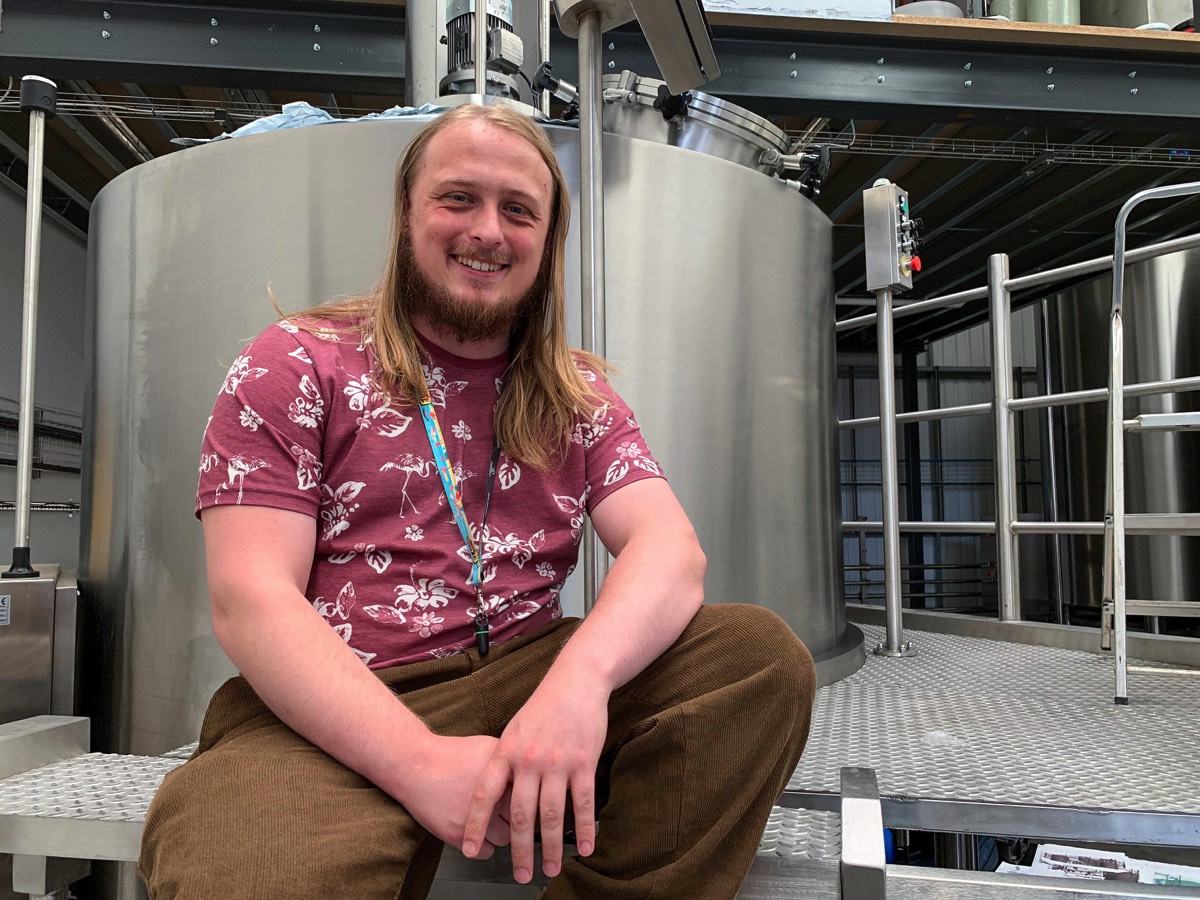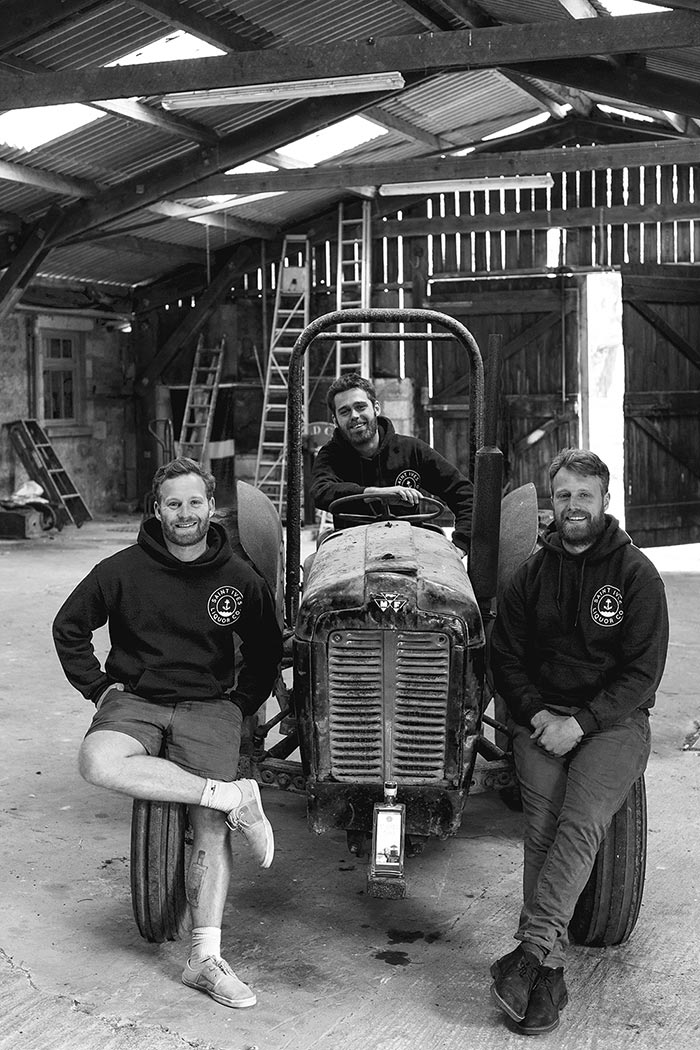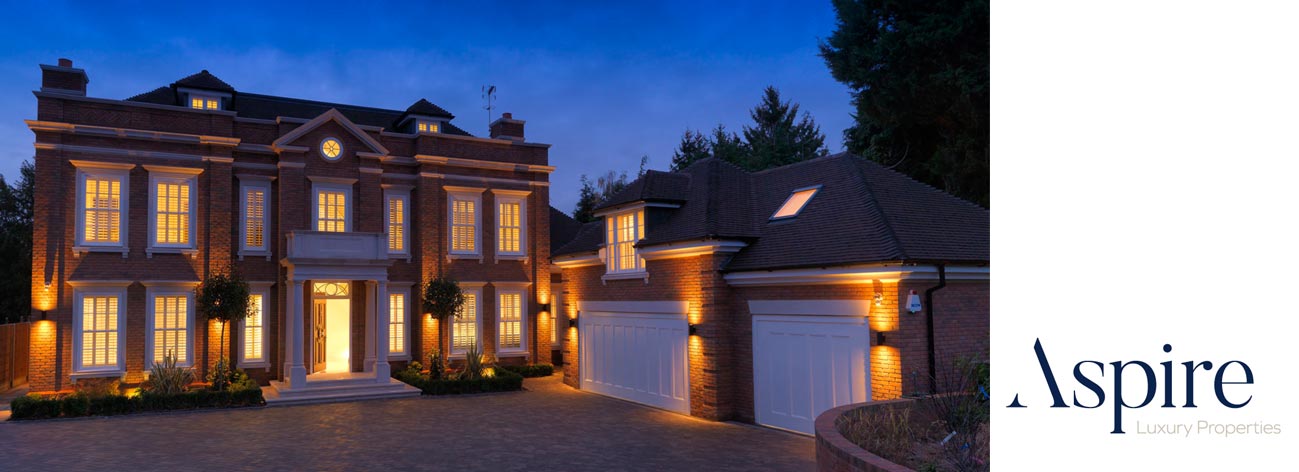DRINK
Surrey’s Premier Lifestyle Magazine
Are British liqueurs the new gin?
Britain has become a nation of liqueur makers, as Kevin Pilley has recently found out.

Aaron Drake, founder of Zymurgorium, first came up with violet parma liqueur
British liqueurs are the new gin. Last year, the UK bought four million non-creamy liqueurs. The market is reportedly worth £1.2 billion. Says Tom Williams of distributor Barcelona Spirits: “It’s all about flavours, colours and packaging. Prices are getting lower and ideas more outrageous.”
A liqueur (from the Latin, to dissolve) is an alcoholic beverage with added sugar infused with increasingly strange USP ingredients.
Pimm’s is considered a liqueur. Invented in 1823 by James Pimm, a farmer’s son who ran an oyster bar in London near the Bank of England, his gin-based concoction was originally sold as an aid for digestion and served in a No 1 Small Cup. 2019 has marked the 160th anniversary of Pimm’s No 1 being sold commercially.
In 1903, Berry Bros & Rudd of London (est.1698) created their King’s Ginger for King Edward VII. But probably the oldest British liqueur is Drambuie (from the Gaelic An dram Buideach which means the drink that satisfies). It was meant to have been offered to Bonnie Prince Charlie on Skye where he fled after the Battle of Culloden in 1745.
Bailey’s Irish Cream was only launched in 1974. Every year 8,000 dairy cows produce 220 million litres of cream specifically for the drink. Gravity Drinks, Shoreditch, London produces Café Marula liqueur with every bottle providing a donation to the Elephant Whispers’ conservation campaign. Marula is the elephant tree. Benedictine, or D.O.M (Deo Optimo Maximo – Praise be to God, Most Good, Most Great) made at Fecamp Abbey, France goes back to 1510. An elixir of life, Dom Bernardo Vincelli’s recipe restored listless brothers.
Bols, originally made in Lootsje (little shed), goes back to 1575. Lucas Bols first made Kummel from caraway seeds, cumin and fennel. The company’s famous egg and brandy-based advocaat means lawyer’s drink. About the same time, in Saint-Barthélemy-d’Anjou, Cointreau was distilled and macerated by confectioner Adolphe Cointreau.
Green Chartreuse, made by Carthusian monks in Tarragona, Spain where they were exiled after the French Revolution and in 1903, originated in 1737. It’s named after the monastery near Grenoble.
Tia Maria, made in Italy, is a 1930s’ concoction.
The orange-flavoured Grand Marnier, named after its inventor and co-investor by the hotel owner César Ritz, first became available in 1827. Triple Sec dates to 1834, its birthplace being Saumur in the Loire.
The vanilla-led Galliano (1896) is named after an Italian war hero. Farmer’s son Gaspare Campari created his iconic beverage in 1860, using chinotto and cascarilla fruit and carmine dye from cochineal insects. St Germain was the first elderflower liqueur. Italy’s almond Amaretto, first made in Saronno, was reportedly given to one of Leonardo da Vinci’s pupils by a model.
The success of British small-batch gin has given birth to a new generation of boutique liqueurists, with hobbies becoming successful businesses.
Manchester’s Zymurgorium, founded by Aaron Drake, first came up with violet parma liqueur. The company name comes from the Latin for the study of brewing and emporium (shop). “It was my mum’s idea and next year investment will reach £10 million!” says the 28-year-old liqueur entrepreneur. A zoology student at Aberystwyth, his bathroom became a distillery and was sold door-to-door on a shopping trolley.
In Halifax, Mrs Cuthbert’s makes liqueurs like lemon drizzle cake, blueberry muffin, victoria sponge and black forest gateau. The Cheeky Gin Co concocts a bubble gum aperitif.
Manchester’s Sweet Little Drinks offers novelty gin liqueurs like pear drops and jelly babies alongside rum liqueurs such as cream egg, popcorn, dunka donut and even a pancake, maple syrup and bacon nightcap. Alfred Button makes a lemon sherbert liqueur.
The Sweet Potato Spirit Company in Evesham, Worcestershire has a lavender gin liqueur. Tarquin Leadbetter makes peach iced tea gin liqueur in his South Western Distillery in Cornwall.
In Wales, Celteg (Welsh Country Wines) offers damson, cherry brandy and mead liqueur, as well as a unique elderport.
Firebox bottles Unicorn Tears. A former SAS member, Andy Peverick, founded the Pilgrim Spirit Company in Northumberland and makes candyfloss liqueur. Probably the most expensive liqueur comes from the West Midlands with Fallen Angel’s herbal liqueur retailing at £165. It comes in a ceramic devil’s head.
Sunderland’s Poetic License distillery boasts the unique sarsaparilla liqueur. In Dudley, in the Black Country, Jordan Lunn makes Dr Eamers’ spiced apple. In Thornbury, Gloucestershire, the Bramley & Gage range stretches from greengage to quince liqueur. The distillery also makes 6 O’Clock Gin. Says Pete Axford: “60 kilograms of quinces goes into one batch of 260 bottles and we make ten batches a year.”
Foxdenton Estate, Buckinghamshire produces a post-prandial apricot brandy liqueur. Says the founder’s great-grandson, Charles Radclyffe: “We were founded in 1935 by Major Charles Radclyffe, soldier and adventurer. He fought in the Boer War and World War One. He was twice shipwrecked and train-wrecked once. Tattooed with the family coat of arms on his chest, he made fruit liqueurs for hunts and shoots.”
Tiptree, the bespoke jam makers based in Essex, boasting the UK’s only jam museum, now make English strawberry liqueur. Prosecco is recommended as a mixer.
Also in Essex, English Spirit makes the UK’s only anise-flavoured sambuca made with elderflower eau de vie. White Heron Drinks in Herefordshire makes cassis. Hugh Munro of Warrington’s Riverside Spirits manufactures apple blossom, lotus flower and passionfruit shimmer liqueurs. “The boom is phenomenal. At 70, my mother launched Christine’s Preserves. In 2012, we made our first liqueur. Growing from a cottage kitchen industry to a multi-million pound company supplying a major supermarket was a slow and organic process.”
Joff Curtoys was a policy advisor on agricultural issues for the RSPB. Now he makes hedgerow gins at Green Farm in Barton-le-Willows, near York. Brother Jules is a mechanical engineer and sister Claire worked in the NHS as an occupational therapist. They now run Sloemotion making award-winning sloe liqueurs.
In St Ives, Cornwall, the three Thompson brothers – Tim, Greg and Bertie – make tongue-tingling tipples such as orange-flavoured arancello, limoncello and limecello. They run the SILCo Searoom gastro bar on the wharf. Recommended is a SILCo Fizz concocted from any of their liqueurs with sparkling wine. Says Tim: “We use the whole fruit to produce less waste and more taste. Peeling and juicing by hand, the peel is infused in 96% natural grain spirit for around 48 hours then infused with sugar syrup. The syrup is added back to neutral grain spirit to steep for two weeks.”

The three Thompson brothers create their own ’cellos and run the SILCo Searoom gastro bar in St Ives
Nearby Pennington’s Spirits & Liqueurs makes Kendal mint cake and gingerbread liqueurs. The Cheshire Gin Company was formed by Richard Buxton and Simon Spurrell. Richard moved from finance into property investment and then into cheese and gin. Graphic designer Simon founded technology businesses in the UK and India. Simon says: “Our cherry and almond liqueur is a nod to Bakewell Tart from neighbouring Derbyshire.”
Aber Falls Distillery in the Snowdonia National Park village of Abergwyngregyn uses sustainably-sourced ingredients and Welsh-inspired botanicals. Sea salt from the Halen Môn Anglesey sea salt company goes into its salted toffee liqueur.
Penderyn in Aberdare makes Merlyn, a combination of cream and the finest Welsh malted barley spirit. Says Jon Tregenna: “Whisky has to be in a cask for a legal minimum of three years and one day. Hence new distilleries produce gin, vodka and cream liqueurs whilst waiting for the whisky to mature.”
In Glasgow, based loosely on the Italian Nocino, Angus and Frances Ferguson’s Demijohn’s walnut liqueur combines eau de vie with British walnuts and cloves.
Pickering’s, based in a former veterinary school in Edinburgh, makes pink grapefruit and lemongrass liqueur. Stag’s breath is made by the Meikle family in Newtonmore in the Cairngorms National Park. It’s a whisky and fermented comb honey blend named after a brand mentioned in Compton Mackenzie’s novel, Whisky Galore.
On Deeside, haroosh is made from blaeberry or brambleberries. Says Peter Dignan of Lost Loch Spirits: “Haroosh is a 1920s’ family recipe using heather, clover and local willow herb honey. Each bottle contains at least fifty brambleberries. Our bees have to travel 4,500 miles to collect enough honey for every bottle.”
Will British liqueurs overtake the gin boom? Perhaps, but in their own sweet time.
